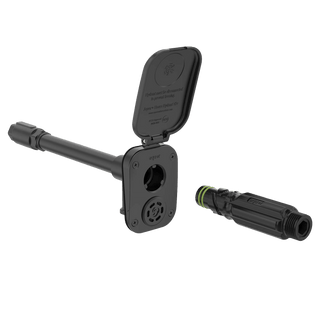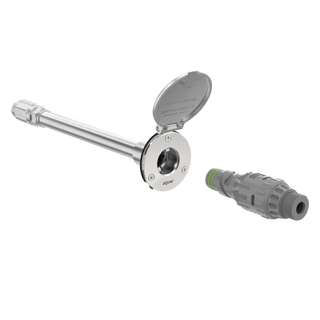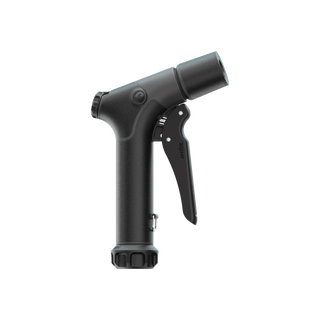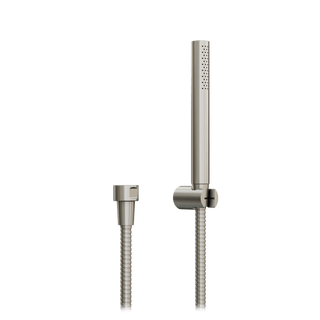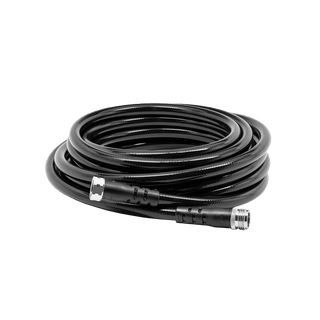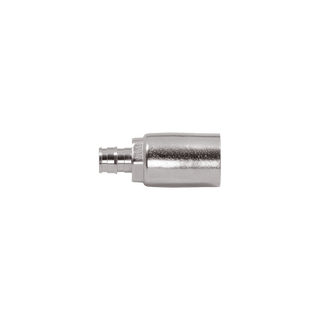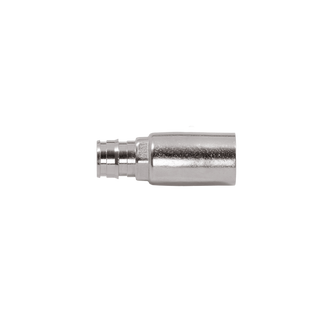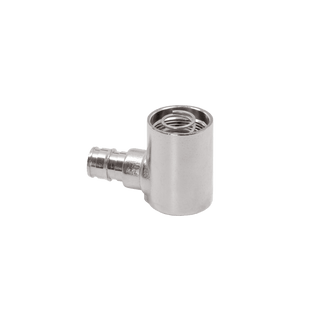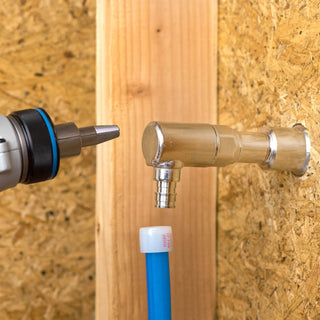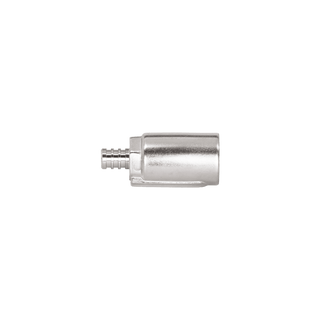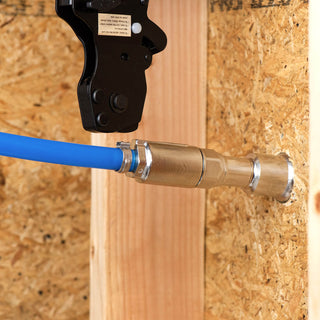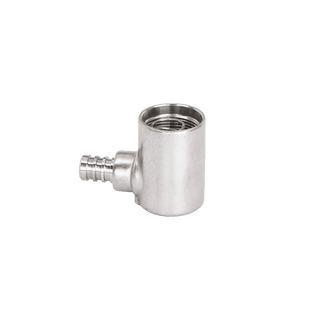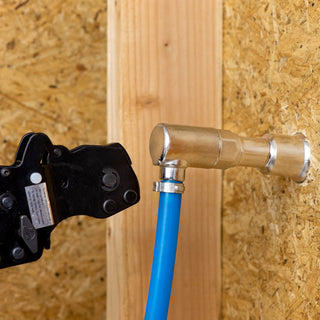Why We Recommend PEX Tubing Over Copper Piping

Over the last few decades, cross-linked polyethylene (PEX) tubing has taken over the plumbing world by storm. With significantly lower costs than copper piping, as well as a much easier installation process, it is no surprise that PEX has become a viable alternative to the old standard of copper. In this post, we’ll walk you through several pros and cons of each to help you decide when installing your next House Hydrant.
Installation
Unlike rigid copper pipes, PEX is flexible and can bend in different directions. It can be shaped around turns, and does not require 90° elbow joints at every junction like copper piping. The main value of having fewer joints is a considerably shorter installation time and better reliability, but the less-turbulent water flow also results in greater water pressures at your fixtures and quieter piping. 1
PEX is stored and transported on large spools, so long runs of tubing can be easily cut and installed. It can be “fished” into hard-to-reach areas and maneuvered around obstacles. On the other hand, copper pipes are rigid and need to be joined together to make longer sections.
To join sections of copper piping, flux is applied and then the ends are soldered using a high-temperature MAPP torch. PEX does not require any flames – an expansion tool is used to “stretch” the ends of the tubing, which then slips over the fitting and immediately shrinks. As quick as this method is, when the tube shrinks it holds tight with a thousand pounds of radial force, creating a durable and long-lasting connection. 2

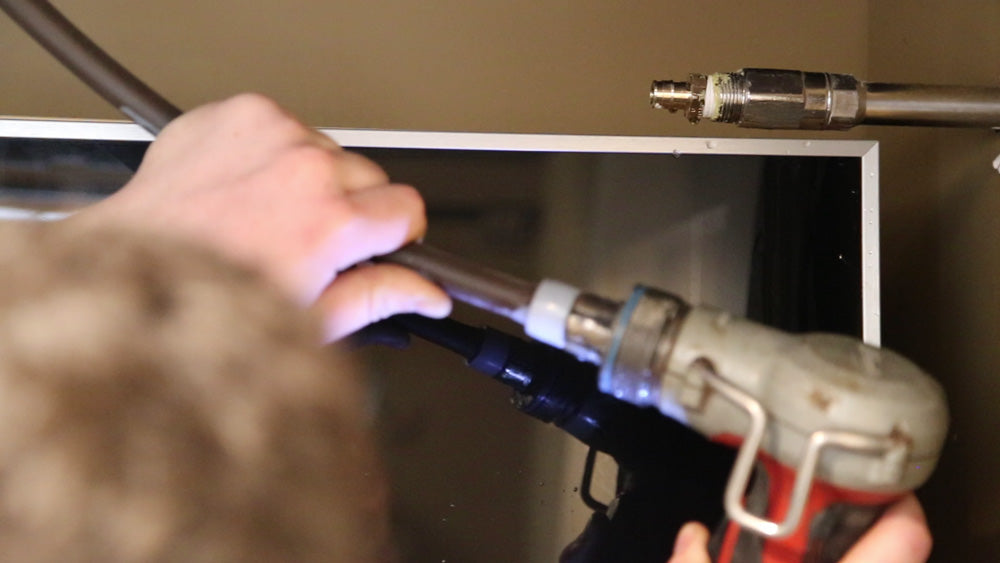
Durability & Maintenance
Directly routing PEX from a distribution point to its source without cutting or splicing the tubing means that you’ll also be avoiding potential points of failure, and saving money on joints.
Fewer fittings also reduces the chance of leaks and other problems.
Although copper piping takes significantly longer to install, it does provide a longer overall lifespan. Copper manufacturers typically offer a 50 year warranty in comparison to 25 years for PEX, but this of course may vary by supplier.
Keep in mind that even with a longer total lifespan, copper piping is more susceptible to corrosion and pinhole leaks. In normal conditions, copper is bacteriostatic, meaning it resists bacterial build-up. But if you have “hard” or acidic water at home, it will corrode the piping over time and could leach copper, lead, or other contaminants into your water supply.
Another advantage to using PEX tubing with your Aquor House Hydrant is easy cleaning and maintenance. Although every home should be built with access to all of its plumbing fixtures, this is not always the case. If you have copper plumbing and your outdoor faucets are hidden inside finished walls, you will need an access panel installed for any future maintenance. But with PEX tubing, you can easily access your entire fixture from outside the home. When installing with PEX, you can add an additional loop of tubing inside your wall. When it is time to clean or service your House Hydrant, you can easily undo the three screws from the faceplate, and then pull the entire assembly out from the exterior of your home.


Freeze Resistance
If you live in a region that experiences freezing temperatures regularly, having PEX plumbing can protect your home with a second line of defense against frozen pipes. The first and most important forms of protection are your outdoor faucet and wall insulation. If the ambient temperature around your plumbing drops below freezing, the water inside will expand when it turns into ice. Copper pipe has little tensile strength, and will burst easily if frozen, but PEX tubing can expand and contract a few times in these conditions. PEX tubing also offers the benefit of lower thermal conductivity than copper, resulting in less heat loss and greater freeze resistance.
Cost
With copper prices skyrocketing over the last decade, it is no surprise that PEX is often chosen nowadays solely for affordability. There are many different manufacturers and types of tubing, but on average the raw materials cost about 1/4 of copper. One upside of copper piping is that it is universally pretty much the same, so choosing a supplier may not be as important as with PEX.
Lastly, installing PEX is usually much cheaper – it is less labor-intensive because there are fewer joints needed, as well as no glue or torches used.
Environmental Impact
Unlike copper, acidic water won’t make PEX corrode and leach toxins. It is also more resistant to mineral build-up that comes with hard water. However, PEX is not UV stable and cannot be used outdoors. The chemical composition and quality of the tubing can also vary by manufacturer and type, so choose your supplier carefully.
Finally, although copper can be recycled, PEX takes less energy to produce and has a lower carbon footprint than copper piping.
While each type of plumbing has its own benefits and drawbacks, it is easy to see why PEX tubing has become so popular among plumbers and homebuilders in recent years. With its low cost, easy connections, and added freeze protection, Aquor recommends using PEX for your next House Hydrant install.

